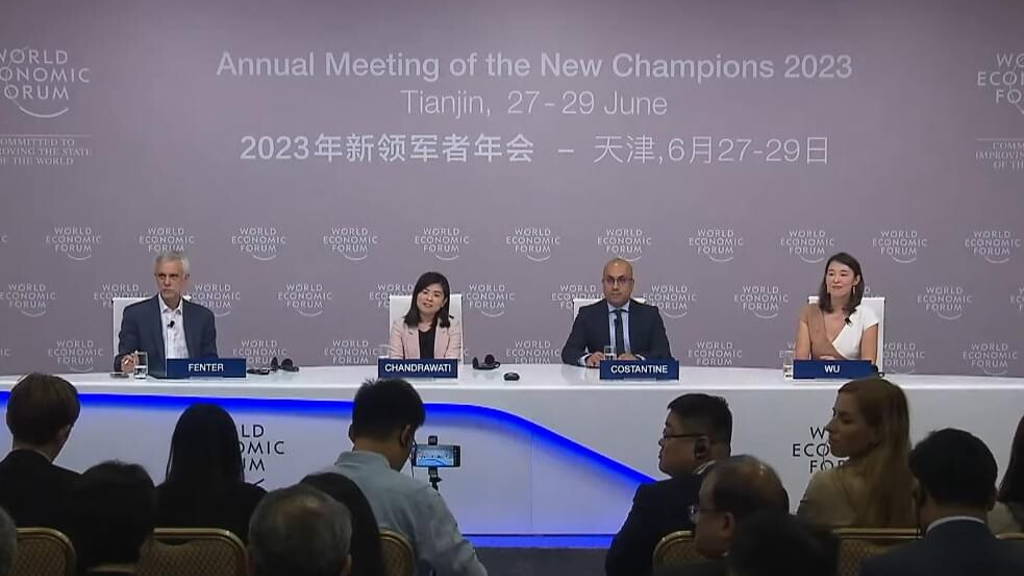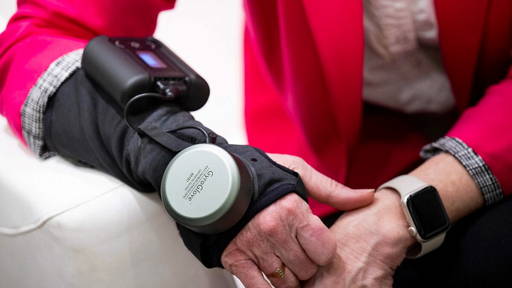- Flexible batteries
The future of electronics will be flexible. The rapid development of wearable devices and flexible screens requires new soft power sources that can be recharged wirelessly many times.
Flexible batteries will become more widely used in biomedical sensors placed in fabrics or directly on/in the human body, to name a few applications. These types of solutions send data on health parameters to integrated mobile applications and healthcare providers, facilitating remote patient monitoring.
As with traditional batteries, some of the hurdles to overcome are their safe disposal and recycling, performance and safety for use in body-worn sensors.
- Generative artificial intelligence
Generative artificial intelligence (AI) has taken our lives by storm. And it's hard to think it's only been available for a few months. Tools like ChatGPT can create new and original content by learning patterns in data, using complex algorithms and learning methods inspired by the human brain.
While generative artificial intelligence continues to focus on text creation, computer programming, and image generation, the technology can also be applied to, for example, scientific work on new drugs or the creation of personalized curricula that adapt to student's skills and learning progress, while encouraging critical thinking and sparking creativity and the use of new ideas.
For example, the first tests of using this technology to generate electronic medical records easily are underway in the medical field. However, applications should comply with agreed ethical and privacy standards to build public trust in generative artificial intelligence.
- Designer phages
Phages are 'good' viruses that can selectively infect and fight dangerous bacteria by injecting their genetic information. Using synthetic biology, the genetic code of phages can be reprogrammed so that infected bacteria perform specific tasks according to genetic instructions.
With the help of bioengineered phages, scientists can alter the functions of bacteria, causing them to produce therapeutic molecules or become sensitive to a specific drug. Phages typically infect only one type of bacteria. Hence the purpose may be to target individual bacterial species in a complex microbiome. The engineered phages can potentially treat diseases associated with disorders of the human microbiome, such as hemolytic uremic syndrome (HUS). The discovery was recently designated as an orphan drug by the U.S. Food and Drug Administration (FDA). The next step will be clinical research. Some companies are already working on engineering phages to fight antibiotic-resistant bacteria or reduce bacterial aggressiveness.
- Metaverse for mental health
Metaverse is a virtual environment where people can interact professionally and socially through augmented or virtual reality (AR/VR) technology. On the one hand, the technology creates entirely new possibilities, for example, completely changing the patient experience during teleconsultation. On the other, immersion in the virtual world creates unknown risks in terms of mental health. The World Health Organization is already warning of an epidemic of mental illness, and the widespread smartphoneization of society has only exacerbated the problem.
Paradoxically, mobile technologies can help in the early diagnosis and treatment of mental illness. One of the reasons is the limited access to mental health specialists. Technology infrastructure can support prevention, diagnosis, therapy for lighter cases, education, and research.
So-called digital therapeutics gaming platforms are already being used to treat mental health problems. In some European countries, mobile apps to help treat anxiety or mild depression can be prescribed by doctors.
In the future, they will be enhanced with non-invasive neuro-technologies to track information about the user's emotional state and progress. Experts predict that metaverse will also merge with therapeutic neurotechnologies such as direct brain stimulation to cure hard-to-treat depression.
- Spatial omics
The human body consists of about 37.2 trillion cells. In many respects, it is an ecosystem that is still a mystery for scientists.
By combining advanced imaging techniques with the resolution of DNA sequencing, spatial omics makes it possible to map biological processes at the molecular level, providing insights into cell architecture and biological events with unprecedented accuracy.
With this revolutionary technology, "cell atlases" are being developed at the molecular level, detailing biological processes in humans and other species. For example, using this technique, scientists have already identified a group of neurons in the spinal cord that appears to be responsible for recovery from spinal cord injury. Stimulating these neurons in paralyzed mice accelerated the return of their ability to walk.
Other promising applications include characterizing different types of cancer cells for the purpose of customizing treatment, and uncovering the mechanisms of complex diseases such as Alzheimer's disease and rheumatoid arthritis.
- Flexible neural electronics
Brain-machine interfaces (BMIs) have gained popularity in recent years, primarily due to the buzz surrounding Elon Musk's Neuralink. The Tesla founder promises that we will soon be able to control machines with our thoughts.
BMIs allow sensors to capture electrical signals produced by the brain. Algorithms then decode them into instructions that a computer can understand. Systems similar to a BMI are already being used to treat patients with epilepsy, as well as in neuro-prosthetics – prosthetic limbs use electrodes to communicate with the nervous system.
Current implants are made of hard materials and are far from perfect. But researchers have recently developed brain-connecting circuits based on biocompatible materials that are soft and flexible, able to adapt to the brain. Flexible BMIs could provide a better understanding of neurological conditions like dementia and autism. Advances in the production of materials and printing of soft circuits may soon accelerate the development of flexible BMI technologies. If this proves successful, humans will be able to integrate with artificial intelligence.
- AI-facilitated healthcare
Health systems around the world are under severe pressure from staff shortages, rising costs, and demographic changes. This health system's chronic crisis can be changed only by making the sector more efficient, better planning the use of human resources, reducing the burden of administrative tasks on staff, and implementing effective population-based prevention programs. The future is health policy based on AI-supported process planning.
New technologies, including AI, can improve the efficiency and throughput of health systems. One example is technologies for optimally matching patients' treatment needs to the availability of facilities, making it possible to greatly reduce the waiting time for treatment – in some cases, from many months to as little as weeks. An AI-based approach to optimizing access to care is already in use in Canada, and other countries have shown interest.
AI has even greater potential in developing countries, where there are huge infrastructure and staffing shortages. Innovative technologies are helping to diagnose, monitor and treat diseases. For example, even a primary care physician can receive interpreted medical scans with the help of AI or measure many health parameters with the use of mobile medical devices integrated with a smartphone.
The other 3 out of the ten technologies in the
World Economic Forum report are sustainable aviation fuel, wearable plant sensors, and sustainable computing.






